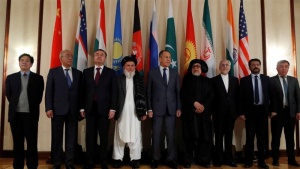Hoda Muthana, an American-born Yemeni woman who decided to drop out of the University of Alabama at Birmingham to join ISIL now wants to return to the United States. In 2014, Muthana, used her tuition money to travel to Syria where she married an ISIS fighter. After her first husband’s death, she got remarried twice and gave birth to a child. After the demise of ISIS-held territory in December, she surrendered to Kurdish forces who placed her in a refugee camp. In 2015, she used her social media accounts to call for the death of America. Hoda Muthana’s case is not an isolated incident. Recruitment of women by terrorist groups has become a sophisticated strategy that groups like ISIL use to attract women from all over the world to their ranks.
According to a 2018 study by the international Centre for the Study of Radicalization, 13 percent (4,761) of foreign recruits into ISIL were women. That number could be significantly underestimated. For a group that has radicals views about women, how is ISIL able to recruit many women to its cause? Reasons for the indoctrination of women into ISIL are extremely complex. They range from feelings of isolation in American culture to a sense of empowerment that is facilitated by jihadist propaganda.
When interviewed by NBC News’ Richard Engel, Hoda Muthana said her family in Alabama was deeply conservative, which contributed to her radicalization. It is certainly odd to hear that a woman joined ISIL because her family was restrictive, considering the group’s oppressive views about female participation in society.
Some individuals may cite lack of education as a reason for recruitment. However, that seems implausible. The International Center for the Study of Radicalization further reports that many ISIL foreign recruits are educated university graduates.
ISIL offers a different version of female empowerment. The terrorist group often uses the term “jihadi brides” and although it forces many women to marry ISIL fighters, many other women are willing to do so as a sign of support for their brother fighters. Sexual pleasure, through marriage, is a reward or compensation for what fighters are willing to give up in their fight against the non-Islamic world. If an ISIL fighter dies, their wives are regarded as martyrs and their wives receive praise and glory from the rest of the group.
Women are also important caregivers to ISIL fighters. They provide food, medicine, and whatever else ISIS fighters desire. As reductive as it is, recruited women are not oblivious to how important they are to a successful ISIL strategy and that is exactly why they are drawn to the cause. According to a study by the Royal United Services Institute for Defense and Security Studies, possible factors include “a rejection of Western feminism, online contact with recruiters who offer marriage and adventure, peer or family influence, adherence to ISIL ideology, nativity and romantic optimism, and the chance to be part of something new, exciting and illicit.”
Huda Muthana, a college student in the United States, gave up a relatively safe, comfortable life within U.S borders and willingly ventured to war torn Syria to help fight a war. She had a life that many people, refugees, and immigrants can only dream of having. She gave it up because she was drawn to the ISIL cause. Studies and the media have been mostly focused on instances of ISIL kidnaping, raping and enslaving women. However, that has sidelined the ability to study why many women are willing to sacrifice an opportunity at a safe, pleasant life in favor of war. Some women are brain washed, but others exhibit very clear rationale behind their decision to join a terrorist group. The portrayal of ISIL women as victims of war is certainly significant, however, it is equally important to portray and study women who are active, willing participants.





